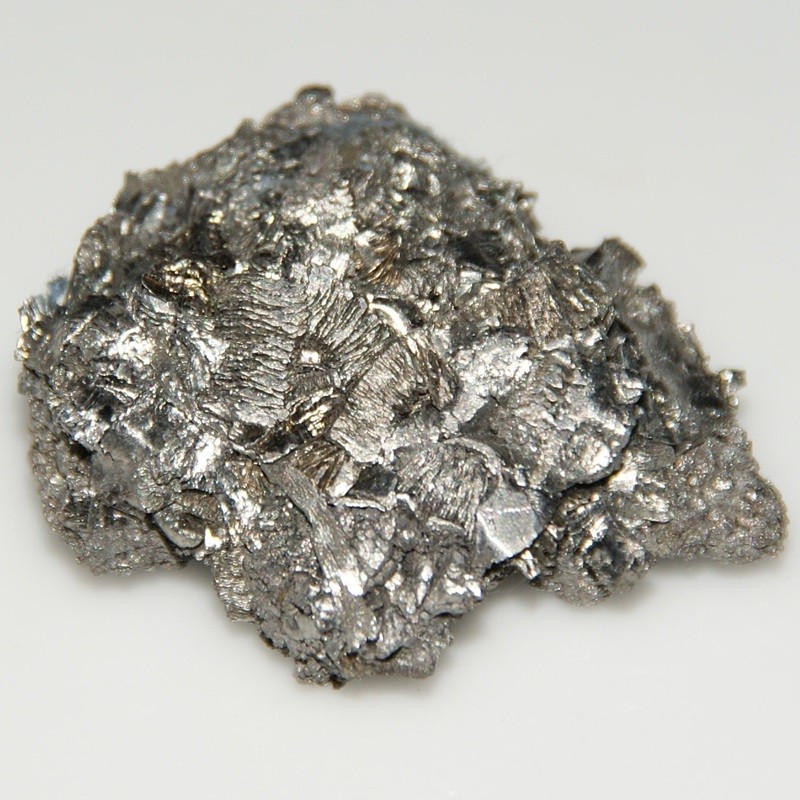Hafniu
72
Hf
Grupă
4
Perioadă
6
Bloc
d
Protoni
Electroni
Neutroni
72
72
106
Proprietăți Generale
Număr atomic
72
Masă atomică
178,49
Numar de masa
178
Categorie
Metale de tranziție
Culoare
Gri
Radioactive
Nu
De la Hafinia, numele latin pentru Copenhaga
Structură cristalină
Sistemul Hexagonal
Istoric
În 1911, Georges Urbain a pretins că a găsit elementul în reziduuri de pământuri rare care s-a dovedit mai târziu a fi un amestec de lantanide deja descoperite.
Dirk Coster și George de Hevesy l-au găsit prin analiză spectroscopică cu raze X în zircon norvegian în 1922.
Anton Eduard van Arkel și Jan Hendrik de Boer au fost primii care au preparat hafniu metalic prin trecerea vaporilor de tetraiodură de hafniu peste un filament de tungsten încălzit în 1924.
Dirk Coster și George de Hevesy l-au găsit prin analiză spectroscopică cu raze X în zircon norvegian în 1922.
Anton Eduard van Arkel și Jan Hendrik de Boer au fost primii care au preparat hafniu metalic prin trecerea vaporilor de tetraiodură de hafniu peste un filament de tungsten încălzit în 1924.
Electroni pe nivelul de energie
2, 8, 18, 32, 10, 2
Configurație electronică
[Xe] 4f14 5d2 6s2
Sub formă de pudră, hafniul este piroforic și se poate aprinde spontan în aer
Proprietăți Fizice
Fază
Solid
Densitate
13,31 g/cm3
Punct de topire
2506,15 K | 2233 °C | 4051,4 °F
Punct de fierbere
4876,15 K | 4603 °C | 8317,4 °F
Energie de fuziune
25,5 kJ/mol
Energie de evaporare
630 kJ/mol
Căldură specifică
0,144 J/g·K
Abundența în scoarța Pământului
0,00033%
Abundența în Univers
7×10-8%

Numarul CAS
7440-58-6
Număr CID PubChem
23986
Proprietăți Atomice
Rază atomică
159 pm
Rază de covalență
175 pm
Electronegativitate
1,3 (Scara lui Pauling)
Potențial de ionizare
6,8251 eV
Volum molar
13,6 cm3/mol
Conductivitate termică
0,23 W/cm·K
Număr de oxidare
2, 3, 4
Aplicații
Compușii pe bază de oxid de hafniu sunt introduși în cipurile pe bază de siliciu pentru a produce procesoare mai mici, mai eficiente energetic și cu performanțe mai bune.
Cea mai mare parte a hafniului produs este utilizată în producția de bare de control pentru reactoare nucleare.
Hafniul este folosit și în becuri pentru blitz fotografic, filamente de becuri și în echipamente electronice ca catozi și condensatori.
Cea mai mare parte a hafniului produs este utilizată în producția de bare de control pentru reactoare nucleare.
Hafniul este folosit și în becuri pentru blitz fotografic, filamente de becuri și în echipamente electronice ca catozi și condensatori.
Hafniul este considerat netoxic
Izotopi
Izotopi stabili
176Hf, 177Hf, 178Hf, 179Hf, 180HfIzotopi instabili
153Hf, 154Hf, 155Hf, 156Hf, 157Hf, 158Hf, 159Hf, 160Hf, 161Hf, 162Hf, 163Hf, 164Hf, 165Hf, 166Hf, 167Hf, 168Hf, 169Hf, 170Hf, 171Hf, 172Hf, 173Hf, 174Hf, 175Hf, 181Hf, 182Hf, 183Hf, 184Hf, 185Hf, 186Hf, 187Hf, 188Hf